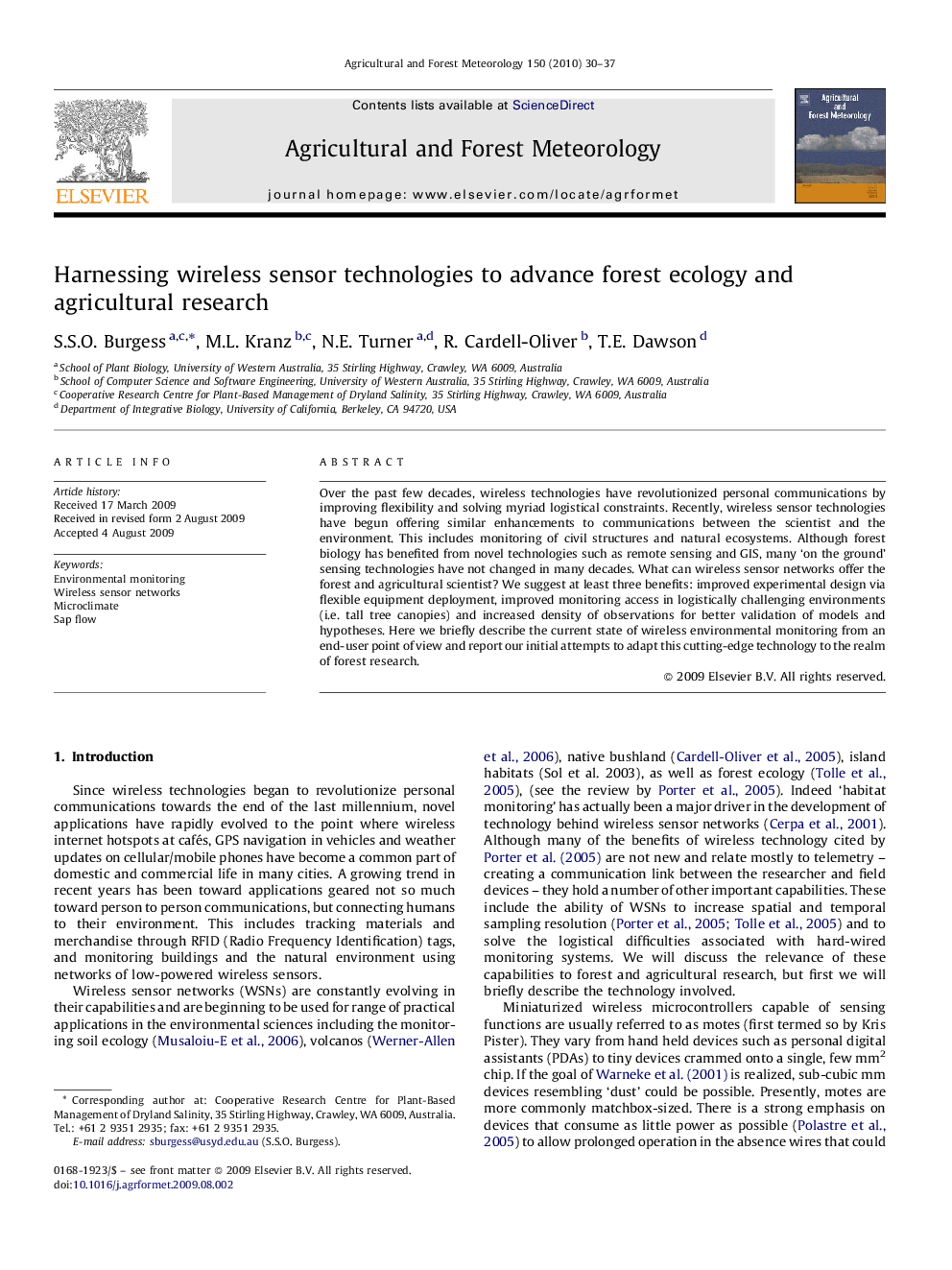| Article ID | Journal | Published Year | Pages | File Type |
|---|---|---|---|---|
| 82556 | Agricultural and Forest Meteorology | 2010 | 8 Pages |
Over the past few decades, wireless technologies have revolutionized personal communications by improving flexibility and solving myriad logistical constraints. Recently, wireless sensor technologies have begun offering similar enhancements to communications between the scientist and the environment. This includes monitoring of civil structures and natural ecosystems. Although forest biology has benefited from novel technologies such as remote sensing and GIS, many ‘on the ground’ sensing technologies have not changed in many decades. What can wireless sensor networks offer the forest and agricultural scientist? We suggest at least three benefits: improved experimental design via flexible equipment deployment, improved monitoring access in logistically challenging environments (i.e. tall tree canopies) and increased density of observations for better validation of models and hypotheses. Here we briefly describe the current state of wireless environmental monitoring from an end-user point of view and report our initial attempts to adapt this cutting-edge technology to the realm of forest research.
